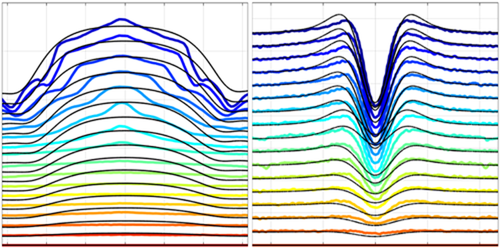Creating a Superconductor-Semiconductor Interface
Alongside the search for room-temperature superconductors, physicists are studying how to integrate “supercurrents” into devices made of other materials. To this end, Shlomi Bouscher and colleagues at the Technion – Israel Institute of Technology have demonstrated an efficient way to inject Cooper pairs—the bound electron pairs that carry supercurrents—into a semiconductor heterostructure [1]. The technique could lead to hybrid devices that combine the exotic properties of superconductors with the more familiar ones of semiconductors.
Cooper pairs are injected from a superconductor into a semiconductor by a process called reverse Andreev reflection. Although this mechanism is highly efficient when there is a good contact between the two materials, it breaks down when the semiconductor exhibits an energy-band perturbation called a Schottky barrier. Bouscher and his colleagues turned this problem to their advantage by exploiting the phenomenon of “resonant tunneling.”
The team sandwiched a 10-nm-thick indium gallium arsenide film between a superconducting niobium layer and a series of differently doped indium phosphide layers. They used the Schottky barrier that formed at the semiconductor-superconductor interface to define one side of a quantum well, while the doped semiconductor layers formed the other side. The width of the quantum well was tuned to a resonance that supported an electron energy level matching that of the Cooper pairs in the superconductor. This energy-level matching made it more likely that electron pairs would tunnel across the Schottky barrier, enhancing the reverse-Andreev-reflection rate.
Now that they have shown that they can improve reverse Andreev reflection across a Schottky barrier, the researchers hope to create a “superconducting light-emitting diode” by combining these Cooper pairs with holes in the semiconductor. Such a device could be a new solid-state source of polarization-entangled photons.
–Marric Stephens
Marric Stephens is a Corresponding Editor for Physics Magazine based in Bristol, UK.
References
- S. Bouscher et al., “Enhanced Cooper-pair injection into a semiconductor structure by resonant tunneling,” Phys. Rev. Lett. 128, 127701 (2022).




